
Regarded as one of the most iconic architectural contributions of ancient Rome, the amphitheatres were built all throughout the Roman Empire, where brutal gladiatorial battles used to take place. One of the most magnificent examples of those amphitheatres is located in the Tunisian city of El Djem. Declared as a World Heritage Site by UNESCO in 1979, the El Jem Amphitheatre is an incredibly large and well-preserved Roman amphitheatre in Africa.
Also known as Thysdrus Amphitheatre, after the original name of the Roman settlement in this location, it is one of the most accomplished examples of Roman architecture of an amphitheatre and perhaps equally, if not better than that of the Coliseum of Rome.
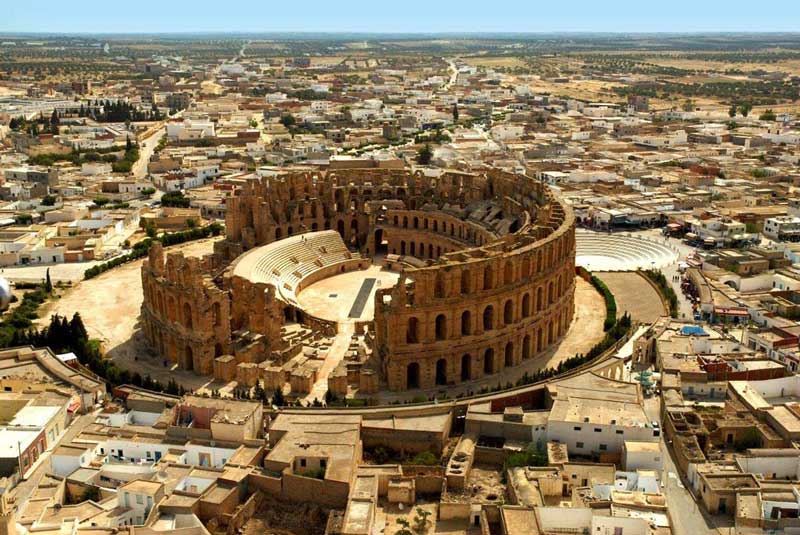
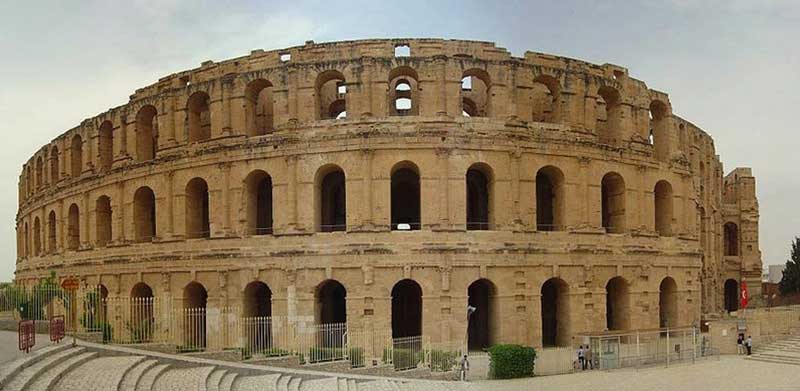
The El Jem amphitheatre, located in a plain in the centre of Tunisia, is built entirely of stone blocks, with no foundations and freestanding. Constructed around 238 AD, it is modeled on the Coliseum of Rome, but not an exact copy of the Flavian construction. Measuring 162 m long and 118 m wide, the El Jem Amphitheatre with its estimated capacity of around 35,000, is the largest of its kind in North Africa. The façade of the gigantic monument consists of three levels of arcades of Corinthian or composite style.
Surprisingly, the wall of the podium, the arena and the underground passages of the El Jem amphitheatre are practically intact even today. Inside, the age old amphitheatre has conserved most of the supporting infrastructure for the tiered seating with the rows of seats rose to a height of 36 m. The tiered seats, arches and the elliptical stone walls are still intact up to 35 m in places. Thus, it is considered by many that the El Jem Amphitheatre is in better condition than the Colosseum in Rome.
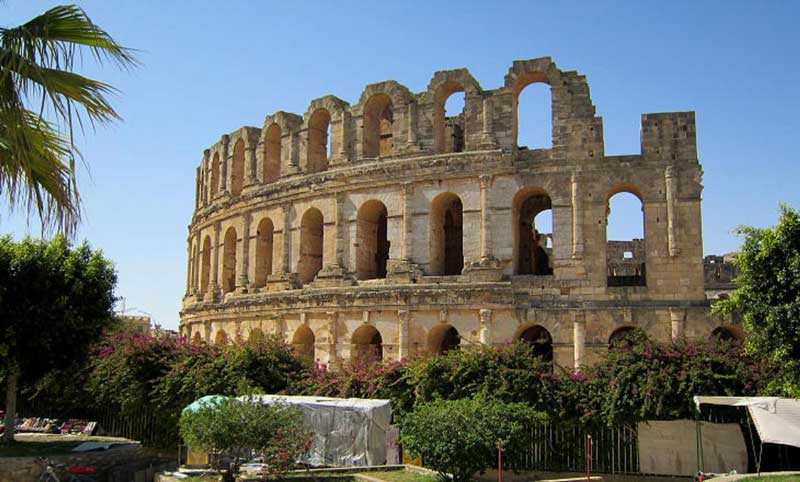
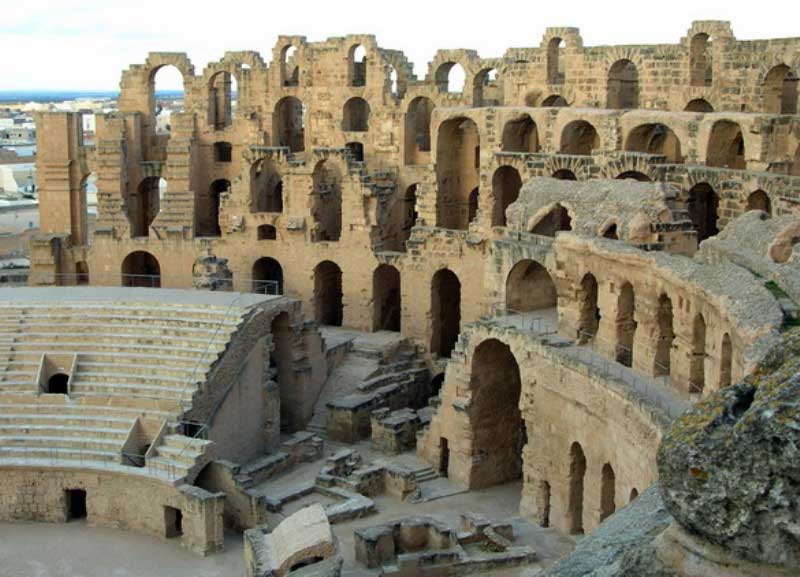
The amphitheatre of El Jem underwent three separate building phases, which means, it is the third amphitheatre built on the same spot of the earlier two. Initially, it was made of ‘tufa’, a type of limestone and then reconstructed, before finally being reconstructed and enlarged. It is estimated that, it was constructed around 238 AD by the local ruler Gordian, who was acclaimed Emperor at Thysdrus. In those days, it was mainly used for chariot races and gladiator shows. However, it also served as a fortress and during the attacks of the Vandals in 430 and the Arabs in 647, the common people took shelter in it. During that time, the Ottoman Turks indiscriminately used cannons to flush the rebels out of the amphitheatre.
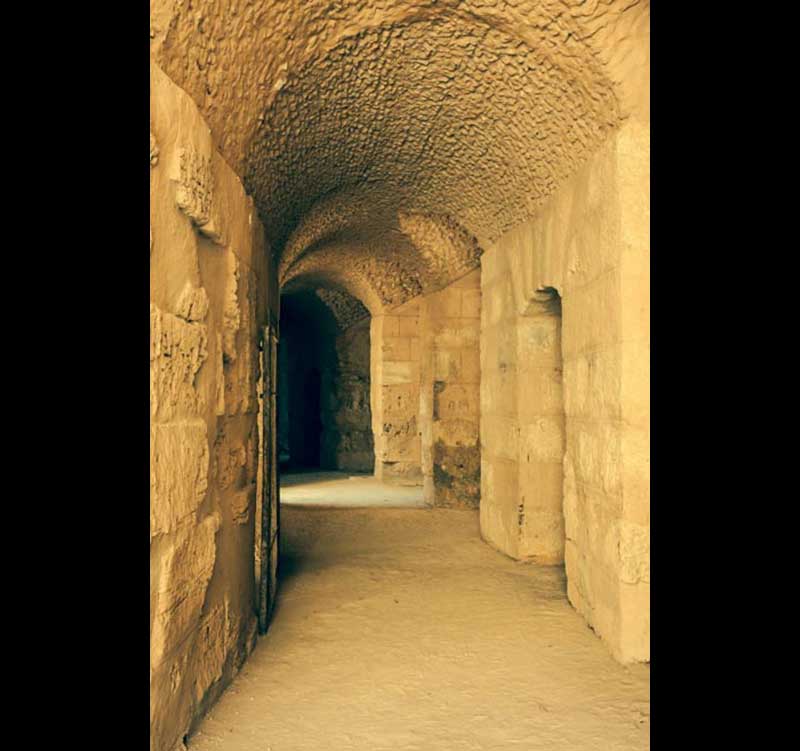

Despite everything, the age old monument remained more or less intact till the 17th century. Unfortunately, from then on, the villagers started to take away its stones for the construction of their houses in the nearby village of El Djem. Even, the bulk of the stones was transferred to the Great Mosque in Kairouan, Tunisia. Nevertheless, the ruins of the 3rd-century amphitheatre of El Jem undoubtedly illustrate the grandeur and extent of Imperial Rome.